Morphology, phylogeny and adaptation
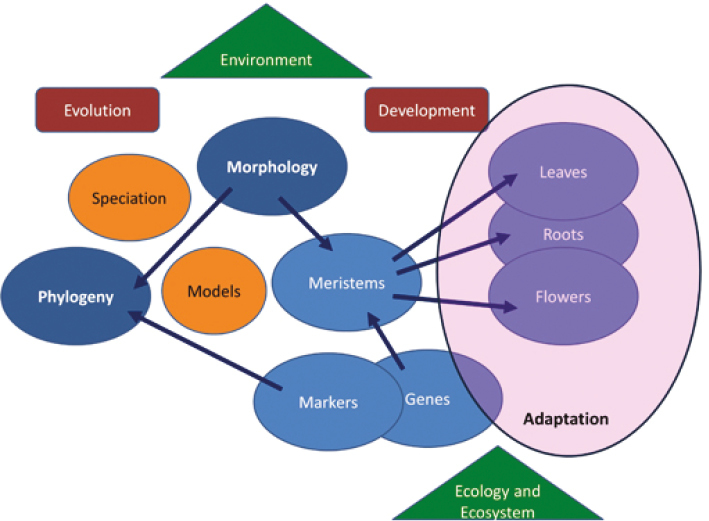
Annals of Botany 120: 621–624, 2017
doi: 10.1093/aob/mcx130
The study of plant evolution and development in a phylogenetic context has accelerated research advances in both areas over the last decade. The addition of a robust phylogeny for virtually all plant taxa based on DNA as well as morphology has given a strong context for this research. Genetics and genomics, including sequencing of many genes, and a better understanding of non-genetic, responsive changes, by plants has increased knowledge of how the different body forms of plants have arisen. Heslop-Harrison overviews the papers in this Special Issue, bringing together a range of papers that link phylogeny and morphology, leading to models of development and functional adaptation across a range of plant systems.
Author: J.S. (Pat) Heslop-Harrison
Adaptation in the root epidermis: the velamen radicum (Botanical Briefing)
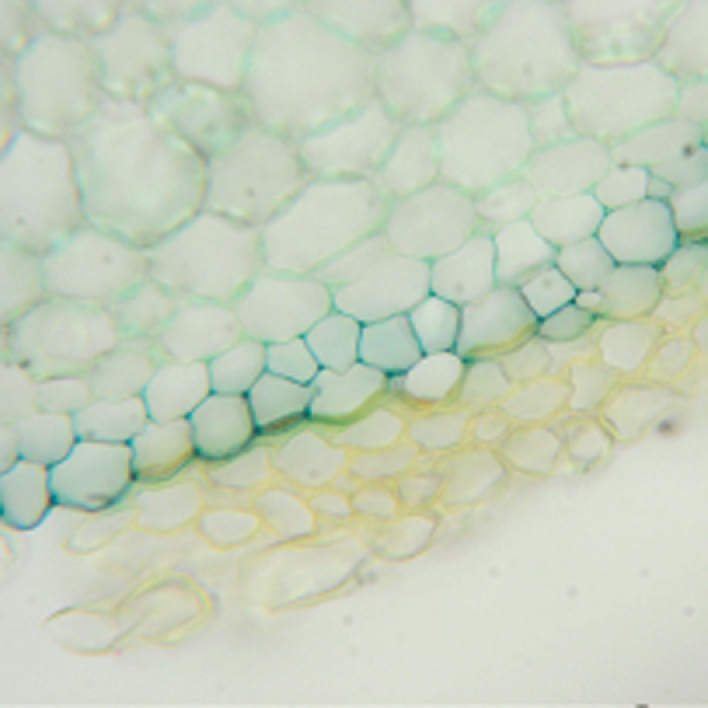
Annals of Botany 120: 625–632, 2017
doi: 10.1093/aob/mcx097
Modern biology textbooks typically describe the velamen radicum (a spongy and usually multiple-layered root epidermis composed of dead cells at maturity) as an example of an adaptation to epiphytism in orchids. Based on an extensive literature review, Zotz et al. show that this depiction is flawed, because the velamen occurs in more than 200 terrestrial genera of monocotyledons, of which > 70 are non-orchids, distributed throughout the entire clade. The authors of this Botanical Briefing article ask for a re-evaluation of the occurrence, evolution, and function of the velamen radicum in both terrestrial and epiphytic angiosperms.
Authors: Zotz G, Schickenberg N, and Albach D.
A seed-phytomer-leaf model links regenerative and life history strategies (Research in context, meta-analysis)
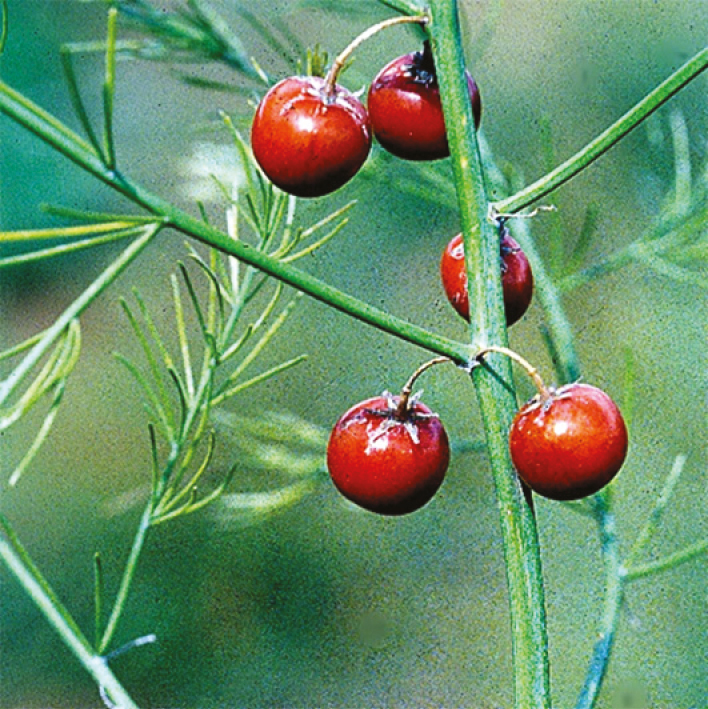
Annals of Botany 120: 633–652, 2017
doi: 10.1093/aob/mcx084
The ‘worldwide leaf economics spectrum’ defines mineral-nutrient relationships in plants. Since no unifying functional consensus exists to similarly link size attributes, Hodgson et al. propose the Seed−Phytomer−Leaf (SPL) theoretical model. This defines leaf size in terms of trade-offs involving the size, growth-rate and number of building blocks (phytomers) of which the young shoot is constructed. Although uncoupling mechanisms were also identified, the authors’ results broadly support SPL theory. They conclude that regenerative and vegetative strategies are functionally linked, and that the expression of size is subject to phylogenetical constraints.
Authors: John G. Hodgson, Bianca A. Santini, Gabriel Montserrat Marti, Ferran Royo Pla, Glynis Jones, Amy Bogaard, Mike Charles, Xavier Font, Mohammed Ater, Abdelkader Taleb, Peter Poschlod, Younes Hmimsa, Carol Palmer, Peter J. Wilson, Stuart R. Band, Amy Styring, Charlotte Diffey, Laura Green, Erika Nitsch, Elizabeth Stroud, Angel Romo-Díez, Lluis de Torres Espuny, and Gemma Warham
Resin as a floral reward for midges: pollination mutualisms in Kadsura
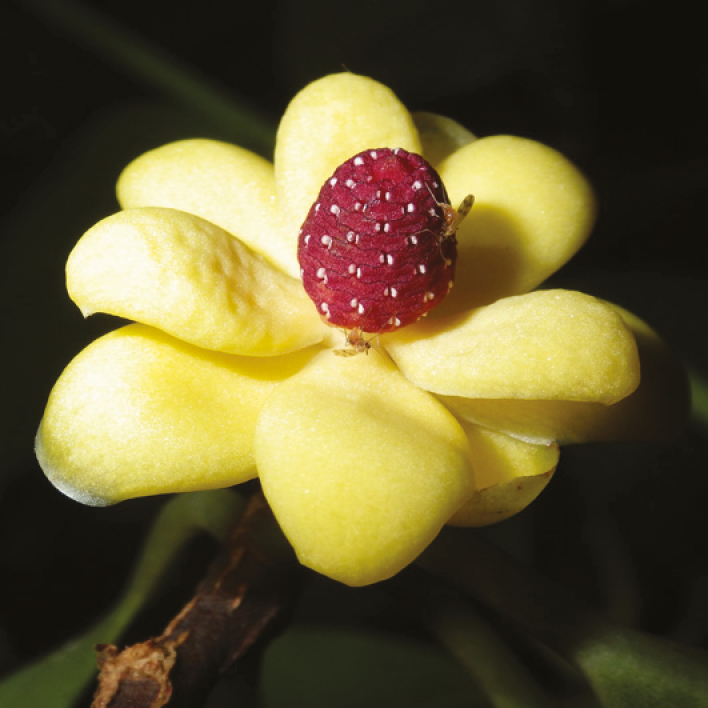
Annals of Botany 120: 653–664, 2017
doi: 10.1093/aob/mcx024
The pollination syndromes of Kadsura, a genus in the ancient flowering plant family Schisandraceae, have remained enigmatic as stamens of the male flowers form a cone from which pollen cannot escape and as a result midges (Diptera) visiting the flowers cannot feed on the pollen. Here Luo et al. show that resin-feeding by midge larvae explains the abundant Kadsura exudates, in their elucidation of pollination mutualisms in the poorly known world of nocturnal flower/fly interactions. Using night-time observation across four sites in China, filming of midge behaviour, gas chromatography and molecular-clock-dated phylogenies to investigate the interactions’ specificity and relation to floral structure, they show that each Kadsura species in fact has it’s own nocturnal resin midge (Resselliela, Cecidomyiidae) pollinator, with midge larvae developing in resin-filled cavities that constitute the reward in both flower sexes.
Author: Shi-Xiao Luo, Ting-Ting Liu, Fei Cui, Zi-Yin Yang, Xiao-Ying Hu, and Susanne S. Renner
Anthers prominence above the corolla enhances pollinator visitation in wild radish
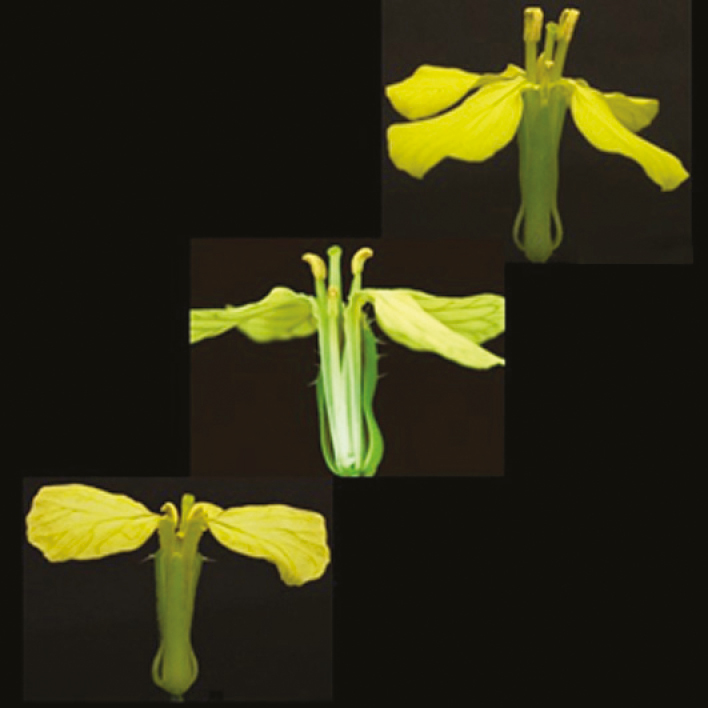
Annals of Botany 120: 665–672, 2017
doi: 10.1093/aob/mcx041
The exact position of anthers in flowers is considered a trait that influences the efficiency of pollen deposition on pollinator’s body and facilitates accurate pollination. Sapir et al. show that in flowers of wild radish, Raphanus raphanistrum, this trait can also be used as visual attraction for pollinators. Using artificial selection lines that expanded variation in anther position, they show that increased anther’s exsertion increased visit number of pollen-feeding insects. Sapir et al. suggest that anther position relative to corolla has an additional adaptive role as advertisement, beyond pollination efficiency, and highlights the multiple ecological functions of floral traits in plant-pollinator interactions.
Authors: Yuval Sapir, Keith Karoly, Vanessa Koelling, Heather F. Sahli, Frances N. Knapczyk, and Jeffrey K. Conner
Serial Block Face-SEM visualisation of nuclear tubular extensions in a carnivorous plant
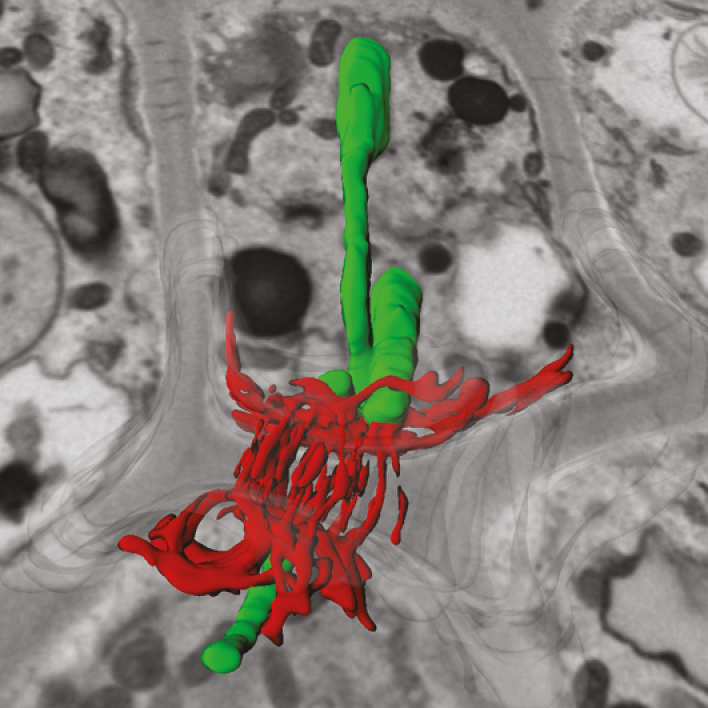
Annals of Botany 120: 673–680, 2017
doi: 10.1093/aob/mcx042
Bladderworts (Utricularia, Lentibulariaceae) possess an extra-ovular female gametophyte that penetrates the sporophytic tissue (placenta). Some parts of the placenta serve as ‘nutritive tissue’, providing nutrients to the female gametophyte and later to the endosperm. Płachno et al. studied the complexity of nuclei structures of ‘placenta nutritive tissue’ across eleven bladderwort species. They observed unusual nuclei, with spindle-like tubular projections, in the placental tissue of Utricularia nelumbifolia. These nuclei structures were visualised using classical TEM microscopy, and reconstructed in 3D using modern Serial Block Face-SEM. The authors call the placental nuclei structures ‘chromatubules’, and propose that they may be involved in nucleus-to-cell-to-cell communication.
Authors: Bartosz J. Płachno, Piotr Świątek, Richard W. Jobson, Karol Małota and Wojciech Brutkowski
Modelling plant morphology: heteroblasty in epiphytic bromeliads

Annals of Botany 120: 681–692, 2017
doi: 10.1093/aob/mcx048
The functional relevance of heteroblasty, an abrupt morphological change in the ontogeny of a considerable number of angiosperm species, is unresolved. Some epiphytic bromeliads show an abrupt heteroblastic change when small plants with narrow leaves suddenly develop broader leaves to form a watertank-like leaf architecture, commonly interpreted as a strategy to cope with drought. Beyschlag and Zotz quantify the effects of the heteroblastic change on whole-plant light capture by reconstructing plant models. Modelling morphology and ontogenetic trajectories of leaf architectural traits revealed that rising total leaf number in atmospheric individuals constantly increased self-shading. The effects of changes in leaf morphology and leaf architecture on plant light capture may explain the common occurrence of heteroblastic species in the understorey of Neotropical forests, which does not negate a simultaneous positive effect of heteroblasty on plant water relations.
Authors: Joachim Beyshclag and Gerhard Zotz
Sugarcane roots and cell wall changes during aerenchyma formation
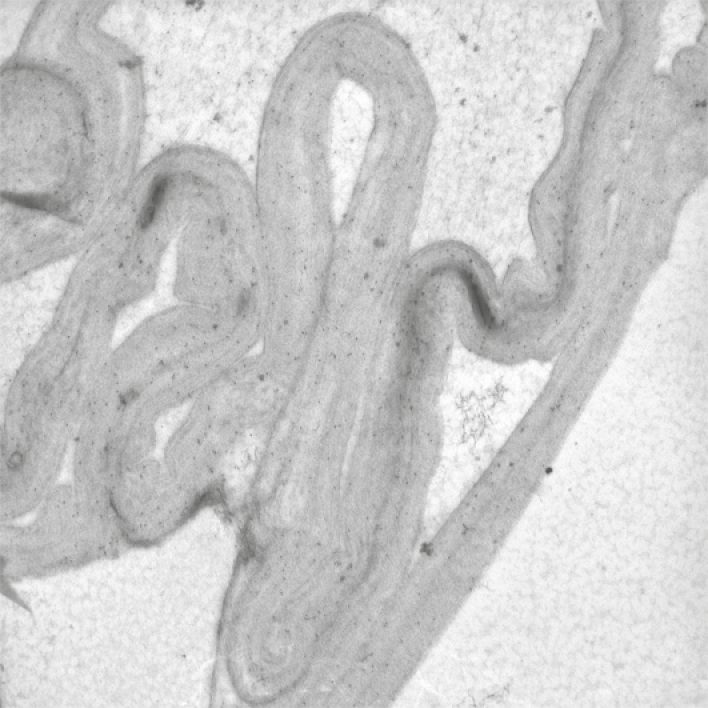
Annals of Botany 120: 693–708, 2017
doi: 10.1093/aob/mcx050
Intercellular gas-conducting spaces, known as aerenchyma, facilitate the transport of volatile substances within plants. Aerenchyma tissues consist of interconnected channels that enable transmission conduction of gases such as oxygen and ethylene, conferring tolerance to flooding. Even when constituted of such gaps, organs such as roots still maintain their mechanical properties. Using sugarcane roots as a model, Leite et al. document cell walls changes during aerenchyma development. The first event of cell wall separation occurs when degradation of one of the hemicelluloses causes cells to expand and enter programmed cell death. Subtle cell wall modifications then take place in the walls of the aerenchyma forming cells, giving rise to a composite made of cellulose and hemicelluloses that surrounds the inner side of the cavities, which becomes the vehicle for transporting volatile substances throughout the root.
Authors: D. C. C. Leite, A. Grandis, E. Q. P. Tavares, A. R. Piovezani, S. Pattathil, U. Avici, A. Rossini, A. B. Cambler, A. P. De Souza, M. G. Hahn, and M. S. Buckeridge
Stolon-tuber system and phylogeny of orchid-like bladderworts (Lentibulariaceae)
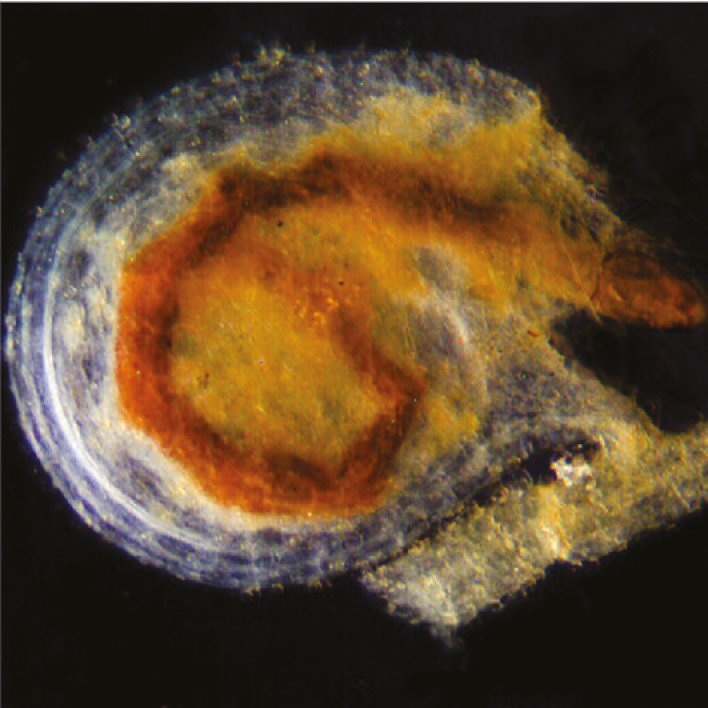
Annals of Botany 120: 709–723, 2017
doi: 10.1093/aob/mcx056
The ‘orchid-like’ bladderworts (Lentibulariaceae) family comprises fifteen species. These robust and mostly epiphytic species were originally grouped within the section Orchidioides and were later split into two sections clades: Orchidioides and Iperua. Rodrigues et al. provides strong evidence based on DNA sequences and morphology to group the section Orchidioides into the section Iperua. Some morphological characters have appeared two or more times, sometimes being lost again in derivative taxa. The tubers, derivatives of the stolon, provide a valuable phylogenetic character, as well as being important adaptations for water storage: they have been derived from stolons at least twice in the phylogenetic history of ‘orchid-like’ bladderworts.
Authors: Fernanda Gomes Rodrigues, Néstor Franco Marulanda, Saura R. Silva, Bartosz J. Płachno, Lubomír Adamec, and Vitor F. O. Miranda
Polyphyly of Arundinoideae (Poaceae) and awn evolution in the grasses
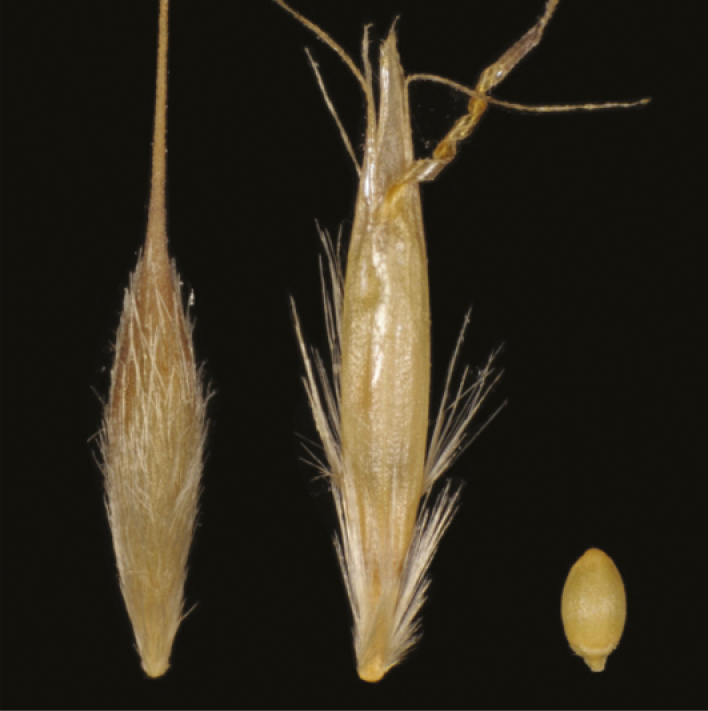
Annals of Botany 120: 725–738, 2017
doi: 10.1093/aob/mcx058
The sub-family Arundinoideae in the grass family (Poaceae) represents a heterogeneous assemblage of poorly-studied species. Teisher et al. conducted a phylogenetic study of chloroplast genomes for the Poaceae to resolve relationships among members of this subfamily, and use this phylogeny to explore the evolutionary history of the twisted geniculate lemma awn. This trait plays an important role in dispersal and burial of seeds for some grass species. Arundinoideae is found not to be a naturally occurring group, with members that are more closely related to species in other subfamilies. The twisted geniculate lemma awn has evolved at least seven times independently in the grasses.
Authors: J. K. Teisher, M. R. McKain, B. A. Schaal, and E. A. Kellogg
New insights into the formation of silica aggregates in sorghum roots
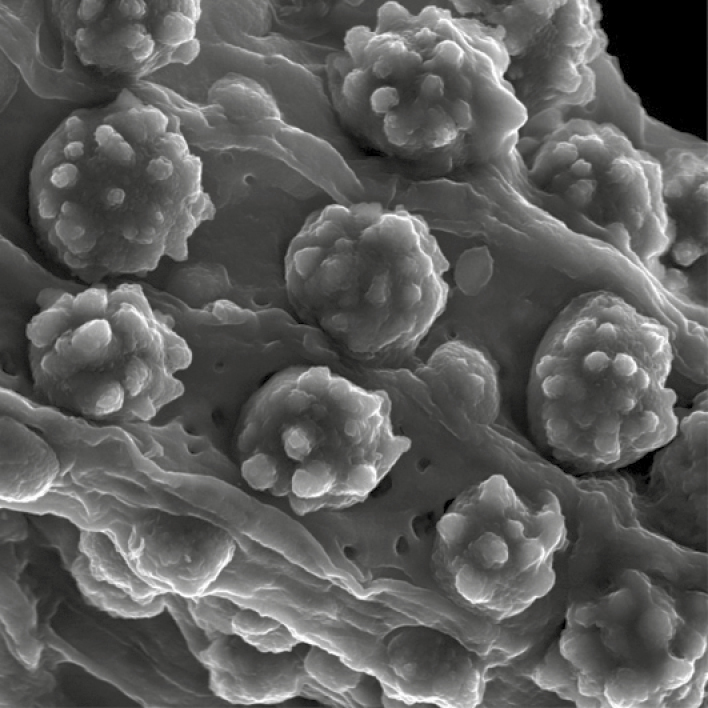
Annals of Botany 120: 739–753, 2017
doi: 10.1093/aob/mcx060
Silica deposition in the cell walls of grasses improves their mechanical properties. Silicification is often viewed as a structural equivalent to lignification, providing similar strength while requiring lower metabolic costs. Soukup et al. investigate the formation of silica aggregates in Sorghum bicolor roots, the role of cell wall components in their formation, and the relationship between silica and lignin. The study reports that the sites for silica deposition are established by inhomogeneous lignification and the two processes – silicification and lignification – are mutually exclusive. However, as silica and lignin exhibit contrasting hydrophobicity, they cannot be considered as equivalent cell wall modifications.
Authors: Milan Soukup, Michal Martinka, Dragana Bosnić, Mária Čaplovičová, Rivka Elbaum, and Alexander Lux
Below-ground bud bank along a climatic gradient in a temperate steppe
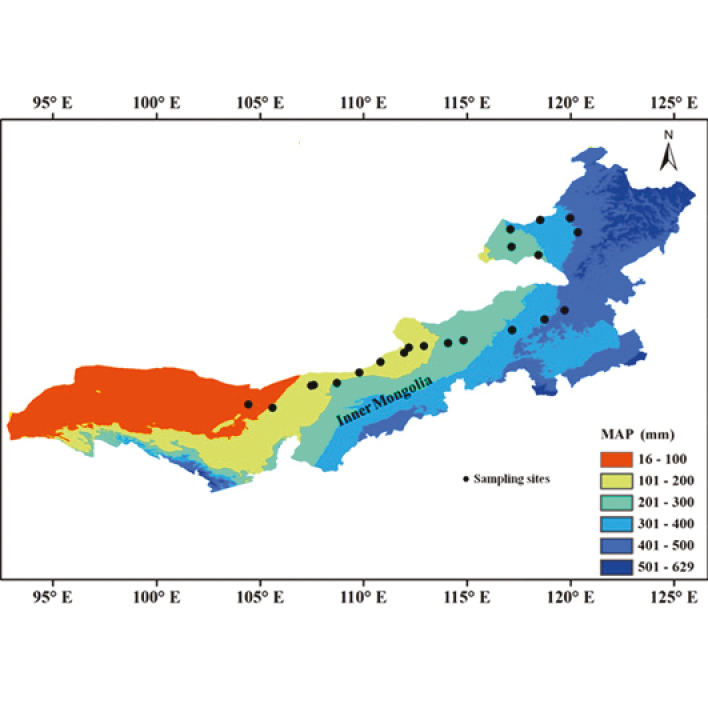
Annals of Botany 120: 755–764, 2017
doi: 10.1093/aob/mcx072
Changes in below-ground bud bank density and composition along climatic gradient informs species distribution patterns and vegetation composition in response to climatic changes. Qian et al. tested how total bud density and composition change along a 2500 km climatic gradient (aridity, precipitation and temperature) in the temperate steppe of northern China. They find that belowground bud bank density decreases towards the dry, hot end of the climatic gradient. Based on the bud banks’ distribution pattern, bulb buds and tiller buds of tussock grasses are shown to be more resistant to environmental stress than rhizome buds.
Authors: Jianqiang Qian, Zhengwen Wang, Jitka Klimešová, Xiaotao Lü, Wennong Kuang, Zhimin Liu, and Xingguo Han
Are the sugary secretions of wasp galls analogues of extrafloral nectar?
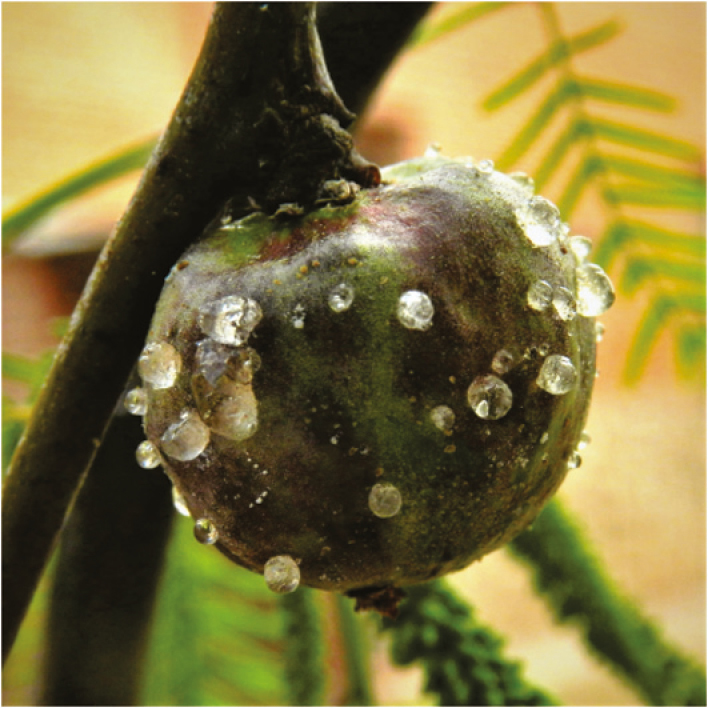
Annals of Botany 120: 765–774, 2017
doi: 10.1093/aob/mcx075
Galls induced by cynipid wasps on South American Prosopis chilensis and P. flexuosa trees secrete a nectar-like liquid that attracts aggressive ants and other arthropods. Aranda-Rickert et al. question whether these secretions can be considered as analogues of plants’ extrafloral nectaries (EFNs), which mediate the most widespread form of protective mutualisms. They conclude that the galls’ sugary secretion is not analogous of nectar but rather of honeydew. No nectar-producing structure was identified, and the indirect defence that galls mediate is directed to the gall-inducing wasp rather than the plant. As in other facultative mutualisms mediated by sugary secretions, the gall secretion triggers a complex multispecies interaction, in which the outcome of individual pair-wise interactions depends on the ecological context in which they take place.
Authors: Adriana Aranda-Rickert, Carolina Rothen, Patricia Diez, Ana María González, and Brigitte Marazzi
Ecology and genetics of transitions from outcrossing to selfing in Primula
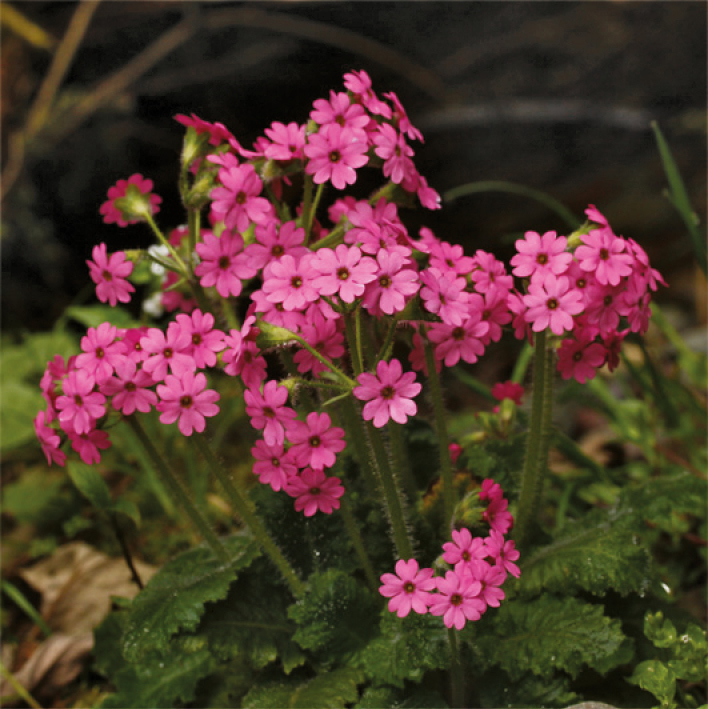
Annals of Botany 120: 775–789, 2017
doi: 10.1093/aob/mcx098
The evolutionary breakdown of the outcrossing floral polymorphism heterostyly is a classic example in plants of a mating system-transition. In primroses (Primula), comparative evidence indicates that the pathway from outcrossing to selfing has occurred on numerous occasions, but little is known about the ecological mechanisms driving this transition or its population genetic consequences. Shuai et al. demonstrate that in the sub-alpine P. oreodoxa, a species endemic to south western China, increasing elevation is associated with a deterioration in pollinator service, increased inbreeding and reduced genetic diversity in populations. These changes result from the spread of self-pollinating variants (homostyles) within populations.
Authors: Shuai Yuan, Spencer C. H. Barrett, Tingting Duan, Xin Qian, Miaomiao Shi, and Dianxiang Zhang
Nectary development and floral architecture in Geraniaceae and Hypseocharitaceae
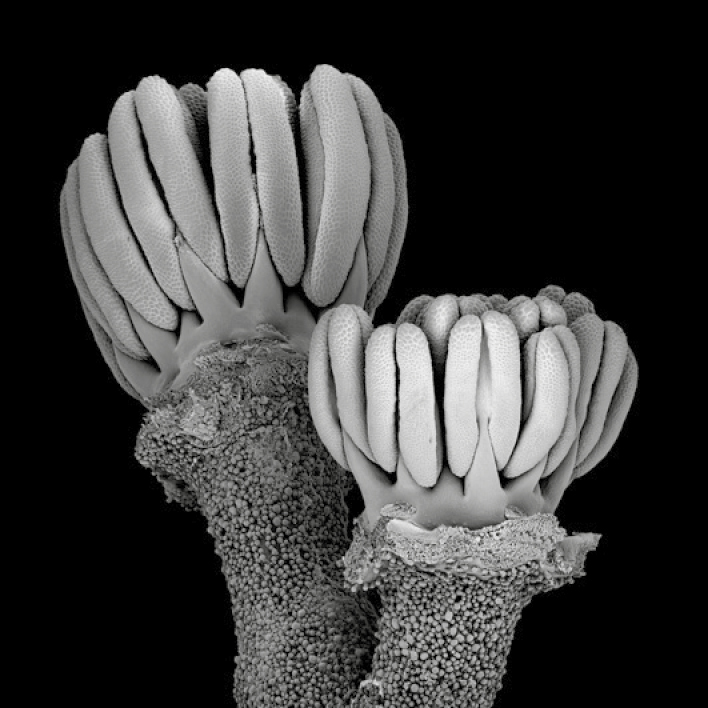
Annals of Botany 120: 791–803, 2017
doi: 10.1093/aob/mcx101
Nectary development and floral architecture in Geraniaceae and their sister group Hypseocharitaceae have hitherto rarely been studied. Jeiter et al. investigate the ontogeny of the nectaries in four genera of Geraniaceae and in Hypseocharis bilobata. Apart from the formation of receptacular nectary glands, they describe various forms of non-glandular receptacle growth; the formation of an anthophore and a spur-like receptacular cavity in Pelargonium. Receptacle, nectary glands, androecium and perianth are highly synorganised and this phenomenon, together with minor changes in the floral organs, significantly affects floral architecture.
Authors: Julius Jeiter, Hartmut H. Hilger, Erik F. Smets, and Maximilian Weigend
Solute transport inside feather moss stems
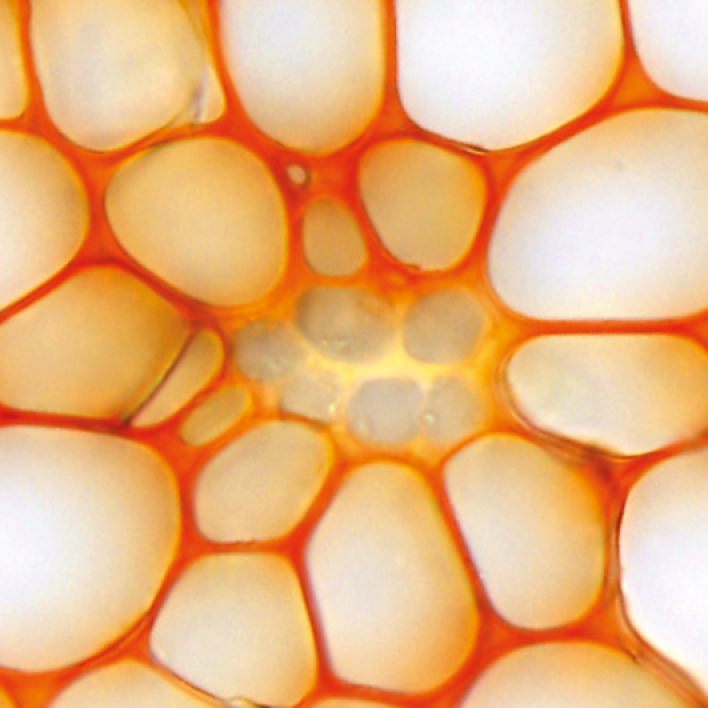
Annals of Botany 120: 805–817, 2017
doi: 10.1093/aob/mcx102
Feather mosses serve as important regulatory organisms for many ecological processes in boreal forests, and are generally considered to be ectohydric species. Sokołowska et al. investigate their stem tissue traits and ability to transport solutes via food-conducting cells internally under modified environmental conditions. Successful internal transport is shown to be strongly dependent on species-specific tissue characteristics. The central strand of Pleurozium schreberi stems consists of hydroids that contribute to effective internal long-distance transport, in particular during low air humidity conditions. The authors infer that these mosses should not be regarded exclusively as ectohydric species.
Authors: K. Sokołowska, M. Turzańska, and M.-C. Nilsson
Floral morphology and anatomy of Ophiocaryon, a paedomorphic genus of Sabiaceae
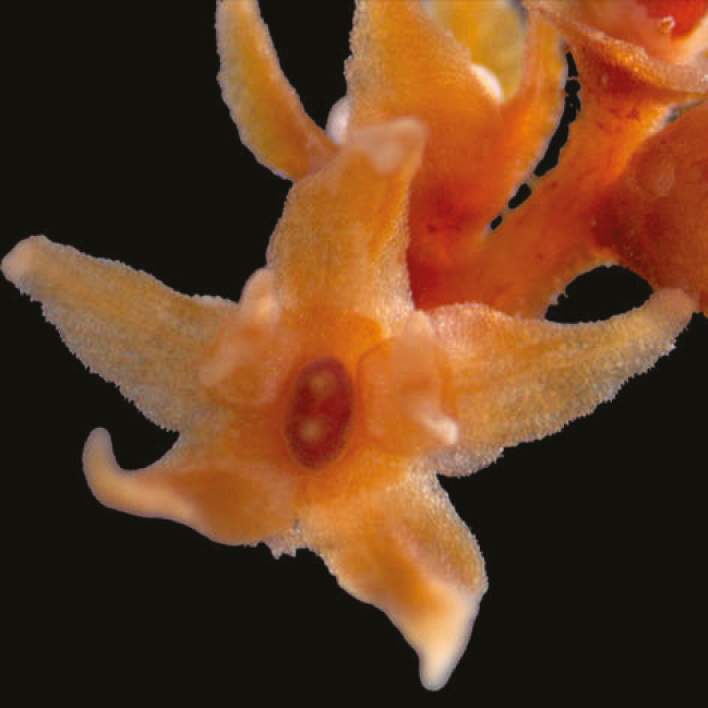
Annals of Botany 120: 819–832, 2017
doi: 10.1093/aob/mcx115
Ophiocaryon is a lesser-known genus in Sabiaceae, hitherto without detailed floral study and with unknown pollination mechanisms. Thaowetsuwan et al. examined floral morphology and anatomy revealing several unusual characters, e.g., diminutive flowers with superposed perianth and stamens, short stamens with cup-shape structure, and ovules with very short single layer integument. The pollination process could involve a secondary pollen presentation on the cup-shaped structure of stamens. Comparative study between Ophiocaryon and Meliosma, its sister genus, suggests that Ophiocaryon may be a paedomorphic derivative from a common ancestor with Meliosma. However, no synapomorphies were found between Ophiocaryon and M. alba, its closest sister group.
Authors: P. Thaowetsuwan, E. N. Honorio Coronado, and L. P. Ronse De Craene
Shoot apical meristem and plant body organization: a cross-species comparative study

Annals of Botany 120: 833–843, 2017
doi: 10.1093/aob/mcx116
The shoot apical meristem (SAM) is the key organizing element of the plant body. Surprisingly, there are almost no across-species comparative data showing links between the SAM and whole-plant traits such as leaf size, stem diameter or seed mass. Schnablová et al. show that such relationships do exist, and moreover, that as a result of recent convergent evolution species differ in their SAM cell number, which is correlated with a number of plant traits. This study suggests that SAM indeed provides a strong link informing traits of plant organs, and is a key component of plant’s evolutionary response to the environment.
Authors: Renáta Schnablová, Tomáš Herben, and Jitka Klimešová
Sex-specific morphology and physiology in Ceratodon purpureus
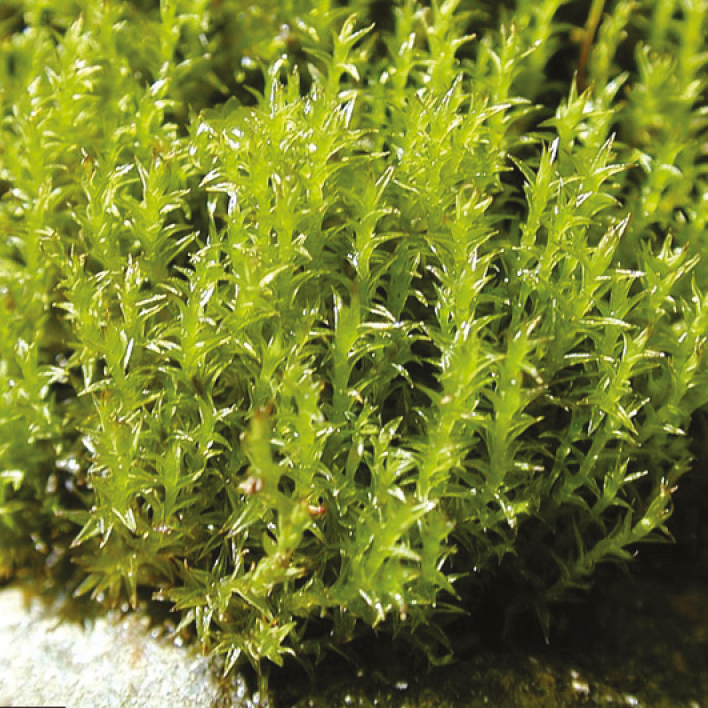
Annals of Botany 120: 845–854, 2017
doi: 10.1093/aob/mcx071
Separate sexes and biased sex ratios are common in bryophytes, yet little is known about how fine-scale, sex-specific morphological traits are correlated with physiology and population sex-ratios. Slate et al. analysed cellular, leaf, and canopy traits and photochemical measurements in the dioecious moss Ceratodon purpureus. They found sex-specific differences in cell, leaf, and photochemical measures, with consistently larger traits in females. Strong sexual dimorphism is likely to have significant effects on resource allocation and biotic interactions. However, population sex-ratios were significantly male-biased in two of three populations, suggesting that sexual dimorphism is not driving these sex ratios.
Authors: Mandy L. Slate, Todd N. Rosenstiel, and Sarah M. Eppley


